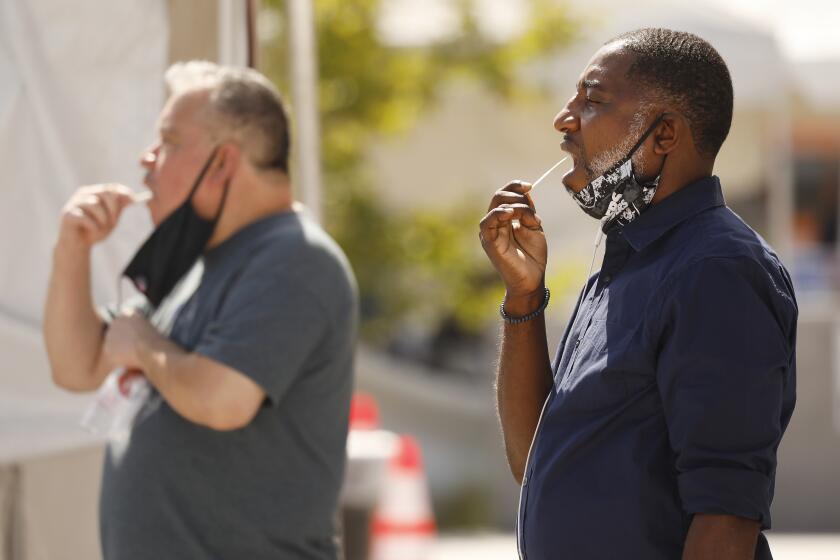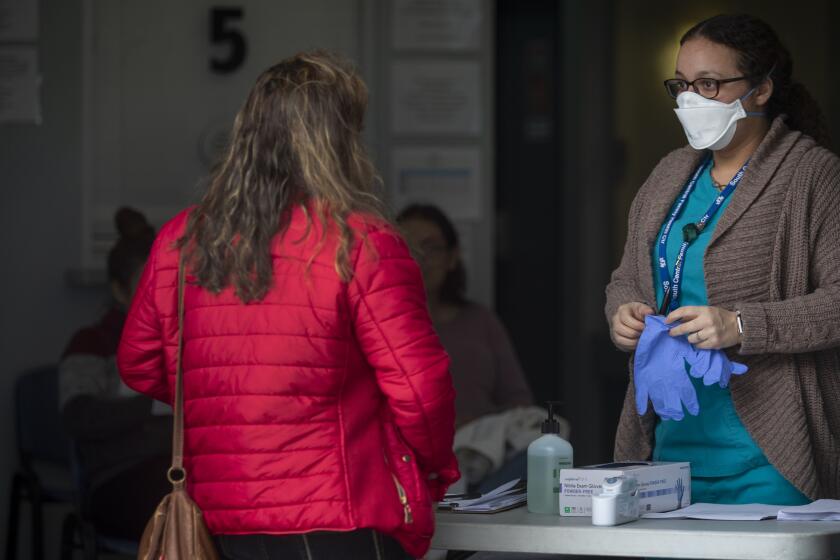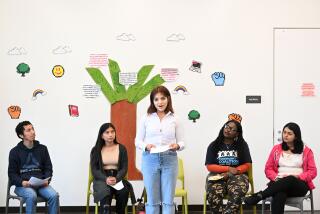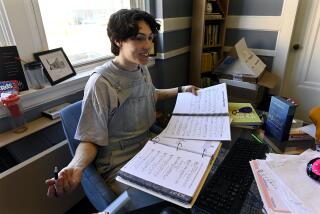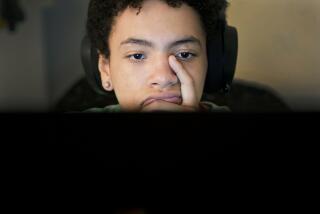COVID-19 makes medical students feel they’re falling behind
COVID-19 is disrupting just about every student’s education, but those in medical school have it particularly hard.
For the record:
11:24 a.m. Aug. 28, 2020An earlier version of this story misspelled the last name of medical student Megan Messinger.
“It’s a nightmare scenario for the class of 2021,” said Jake Berg, a fourth-year student at the Kentucky College of Osteopathic Medicine.
In March, students at the Pikeville, Ky., school were abruptly pulled out of the hospitals and medical offices where they normally learn how to treat patients. Over the space of less than two weeks, Berg said, medical students in “pretty much the entire country” transitioned from seeing patients in person to learning online.
“Everyone goes along with the idea that we’re all in the same boat together,” he said. “But, really, it’s like we’re all on the Titanic and it’s sinking.”
Megan Messinger, in her fourth year at Western University of Health Sciences in Pomona, figures she has lost about 400 hours of patient time as a result of the pandemic. “I feel very behind,” said Messinger , who hopes to do a combined residency in pediatrics and psychiatry.
She said she worries that “the class of 2021 is going to be the dumb class of interns.”
The third and fourth years of medical school are when most students do their core clinical training in areas such as internal medicine, pediatrics, surgery and obstetrics-gynecology. Each rotation involves a one- or two-month stint in a hospital or clinic.
Fourth-year students tend to spend time in more specialized fields, often traveling to get experience that isn’t available through their own medical schools and to informally “audition” at places where they might like to do their residencies. Because of the pandemic, however, these “away rotations” have been suspended.
Schools and hospitals are trying to restore their core training but, in many areas, this is still a work in progress. The uncertainty adds to students’ stress levels.
“I have no idea how I will learn about the culture of the hospitals I’m applying to,” said Garrett Johnson, a fourth-year student at Harvard Medical School. “You don’t get to meet any of the people or get a feel for the place.”
One of the hallmarks of the COVID-19 pandemic in the United States is that it disproportionately strikes people of color. But it doesn’t have to be that way.
Karissa LeClair, a fourth-year student at Dartmouth College’s Geisel School of Medicine in Hanover, N.H., shared Johnson’s concern. “I was looking forward to getting to know places I had not been to previously,” she said.
LeClair, who wants to become an ear, nose and throat specialist, said training opportunities she applied for in New York City, Boston, and Ann Arbor, Mich., were all canceled.
Since she was not planning to be in New Hampshire for most of this year, LeClair now has no place to live near Dartmouth. “I’m piecing together sublets and staying with friends,” she said.
Messinger is facing similar problems in Southern California.
“I’m at Cedars right now, and loving it,” she said, referring to Los Angeles’ Cedars-Sinai Medical Center. “But you can only do one rotation there. I don’t have anything scheduled after this. My only audition rotation, at Tulane, was canceled.”
Administrators are sympathetic.
“They have had major disruption,” said Dr. Alison Whelan, chief medical education officer for the Assn. of American Medical Colleges. “Medical school is stressful, and with COVID it’s even more stressful.”
In order to become well-rounded doctors, students need to see a broad mix of patients with a diverse group of medical issues. But even at hospitals and clinics that have resumed general care, patients with ailments other than those associated with COVID-19 are not showing up because they’re afraid of catching the coronavirus. Elsewhere, elective procedures have been canceled or postponed.
“That has become a challenge,” Whelan said.
In areas with high COVID-19 rates, shortages of personal protective equipment have kept students out of hospitals and other medical facilities.
The Assn. of American Medical Colleges in August updated its guidance on student participation in clinical rotations. It continued to leave decisions about allowing students into patient care areas up to individual teaching hospitals and medical schools. But it also noted that while students are not technically essential in day-to-day care activities, “medical students are the essential, emerging physician workforce” whose learning is necessary to prevent future medical shortages.
“The progression of students over time for relatively on-time graduation is essential,” Whelan said. Enabling students to finish their education in the COVID-19 era “is an ongoing, complex, jigsaw puzzle.”
Third-year students can still complete most of their required rotations, although perhaps not in the usual order. Schools have tried to fill in the gaps by dramatically increasing their use of online teaching of diagnostics and care.
“A fair amount of what students do is observation,” she said. “So schools have created step-by-step videos.”
The incidence of injuries attributed to domestic partner violence rose sharply after the coronavirus outbreak began, and those injuries were more serious.
Some educators are confident that students will catch up — eventually.
“Most learning goes on during your residency,” said Dr. Art Papier, who teaches dermatology at the University of Rochester medical school in Rochester, N.Y. “I think it can all be made up.”
In addition to missing out on training opportunities, medical students face obstacles in taking their national board examinations. There are several types, and they’re not always conveniently offered near their schools.
After having one required test canceled on short notice, Berg, the student in Kentucky, had to reschedule. The first open seat was three hours away and a couple of weeks later. Then his canceled test was reinstated.
While the travel may be a burden, the exams are needed “to protect the public” from doctors who have not demonstrated competence caring for patients, said Dr. Robert Cain, chief executive of the American Assn. of Colleges of Osteopathic Medicine, which oversees osteopathy programs like the one in Kentucky.
In the end, Cain said, this crop of students may emerge from the pandemic as better doctors than those who didn’t face such challenges.
“Hopefully, we’ll look back and see them as the class of resilience,” he said. “That they were able to work through some very hard times.”
Julie Rovner writes for Kaiser Health News, a nonprofit news service covering health issues. It is an editorially independent program of the Kaiser Family Foundation that is not affiliated with Kaiser Permanente.
